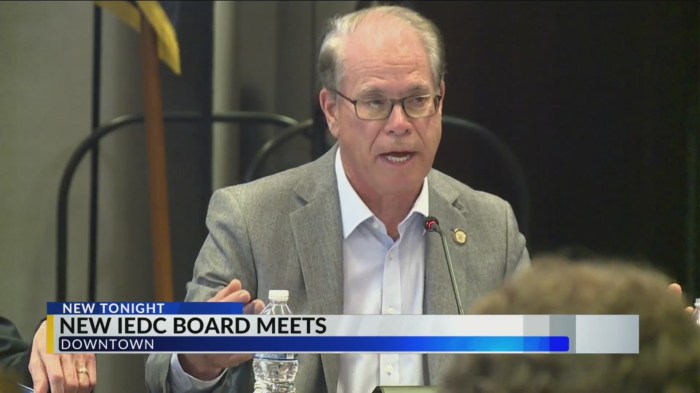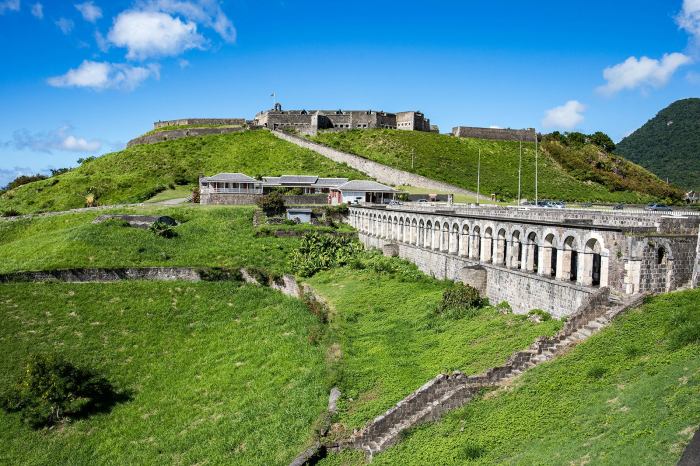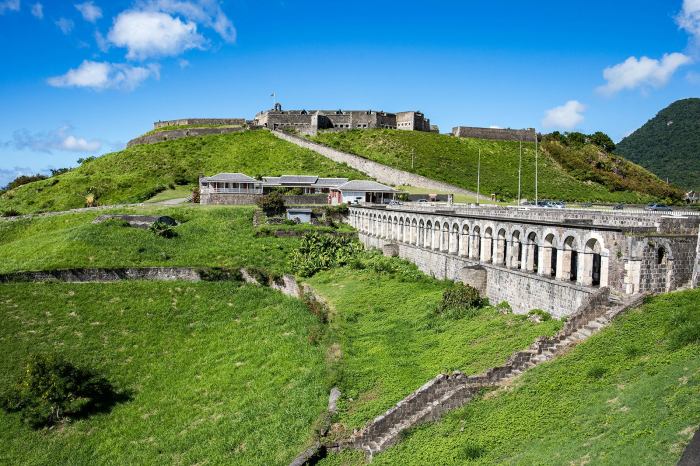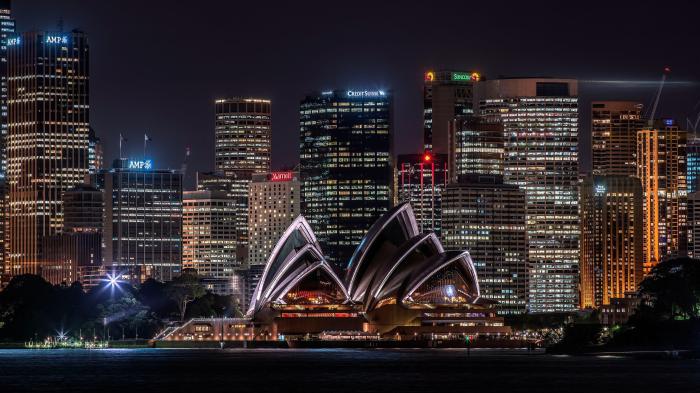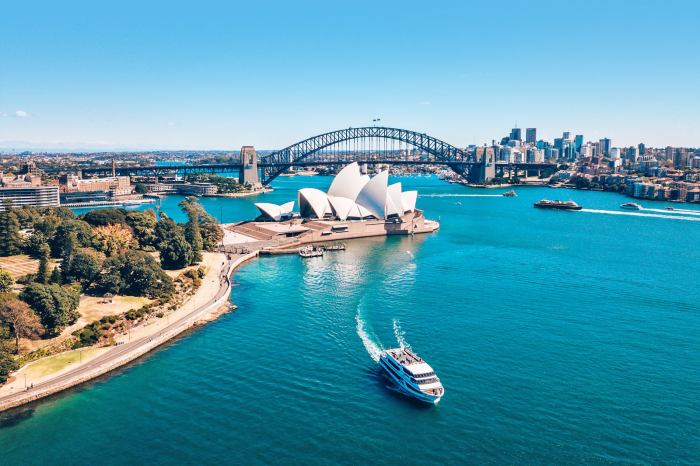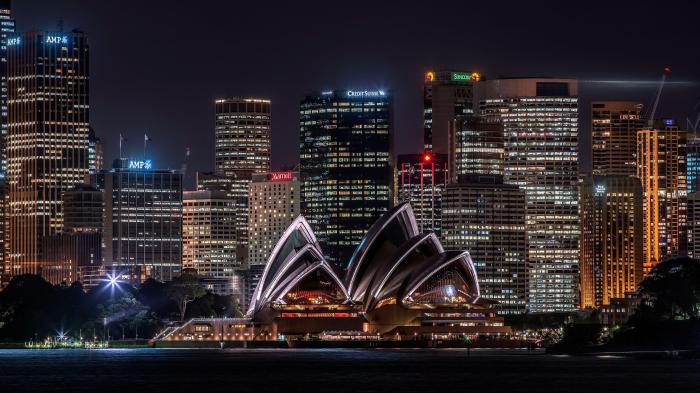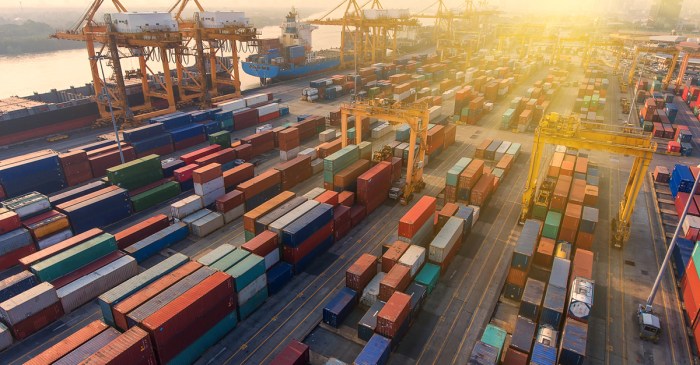First time guide to sao tome principe – First time guide to São Tomé e Príncipe: Embark on a captivating journey to this enchanting island nation, a hidden gem off the coast of Africa. Discover its rich history, vibrant culture, and breathtaking natural beauty. This comprehensive guide provides essential information for a seamless and unforgettable trip, covering everything from visa requirements and local customs to must-see attractions and delicious cuisine.
Prepare to be amazed!
From the moment you arrive, you’ll be captivated by São Tomé e Príncipe’s unique charm. Explore lush rainforests, pristine beaches, and historical landmarks. Learn about the local traditions, savor authentic flavors, and discover a way of life that’s both captivating and comforting. This guide will empower you to fully immerse yourself in this unique destination.
Introduction to São Tomé e Príncipe
São Tomé e Príncipe, a volcanic archipelago in the Gulf of Guinea, boasts a captivating blend of history, culture, and natural beauty. This tiny nation, often overlooked on global maps, offers a unique and authentic experience for travelers seeking a truly immersive journey. Its history, shaped by Portuguese colonization and the struggles for independence, is woven into the fabric of the nation’s identity.
The islands’ rich biodiversity, from lush rainforests to pristine beaches, provides a tranquil escape from the modern world.
Geographical Overview
São Tomé e Príncipe is comprised of two main islands, São Tomé and Príncipe, situated approximately 250 kilometers apart in the equatorial Atlantic Ocean. The landscape is remarkably diverse, ranging from volcanic peaks to coastal plains. The islands’ varied topography supports a wealth of flora and fauna, many species endemic to the region. The equatorial climate contributes to a humid and tropical environment, perfect for lush vegetation and abundant rainfall.
| Characteristic | Description |
|---|---|
| Geography | Two volcanic islands, São Tomé and Príncipe, in the Gulf of Guinea, with diverse landscapes ranging from rainforest to beaches. |
| Climate | Equatorial, tropical, and humid, with high rainfall. |
| Biodiversity | Remarkable variety of flora and fauna, with many endemic species. |
Historical Context
The islands were initially inhabited by indigenous populations before the arrival of Portuguese explorers in the 15th century. This marked the beginning of a period of colonization that profoundly shaped the nation’s cultural and social development. The islands were utilized for the cultivation of cash crops, such as cocoa, which significantly influenced the island’s economy and society. The struggle for independence culminated in the 20th century, leading to the establishment of São Tomé e Príncipe as an independent nation.
Cultural Identity
São Tomé e Príncipe’s cultural heritage is a vibrant fusion of indigenous traditions and Portuguese influences. The local cuisine, for instance, incorporates both African and European culinary elements. Music and dance forms, reflecting a rich oral tradition, are deeply ingrained in the daily life of the islanders. The archipelago also preserves unique artistic expressions, including intricate wood carvings and colorful textiles.
Key Attractions and Activities
For first-time visitors, exploring the lush rainforests and volcanic peaks is a must. Hiking trails provide breathtaking views and opportunities to encounter the unique biodiversity of the islands. The island’s colonial architecture, including historic forts and buildings, offers insights into its past. Relaxing on the pristine beaches, indulging in the local cuisine, and experiencing the vibrant local markets are also highly recommended.
The islands offer opportunities for snorkeling and diving, revealing the underwater world’s beauty and diverse marine life.
Practical Information for First-Time Visitors
São Tomé e Príncipe, a captivating island nation, beckons with its pristine beaches, lush rainforests, and vibrant culture. Before embarking on your adventure, understanding the practical aspects of travel is crucial for a smooth and enjoyable experience. This section details the essentials for navigating the local landscape.Navigating a new destination often involves understanding local customs and regulations. Visa requirements, currency, transportation, and communication are all important components of a seamless trip.
Knowing the best time to visit, coupled with potential travel disruptions, will further contribute to an efficient trip.
Visa Requirements
Visa requirements for São Tomé e Príncipe vary significantly depending on your nationality. Citizens of certain countries may be eligible for visa-free entry for a limited duration, while others may need to apply for a visa in advance. Consult the official São Tomé e Príncipe embassy or consulate website for the most up-to-date and accurate information. Always double-check your passport’s validity period before travel.
Currency and Exchange Rates
The official currency of São Tomé e Príncipe is the São Tomé and Príncipe Dobra (STD). Exchange rates fluctuate, so it’s wise to check current rates before your trip. Major banks and exchange bureaus are usually available in the capital city, São Tomé. It’s recommended to have some local currency on hand for smaller transactions and vendor payments.
Always keep in mind that credit cards might not be universally accepted.
Planning a first trip to Sao Tome and Principe? It’s a fantastic destination, but knowing where to start can be tricky. Fortunately, there are some great resources for a first-time visitor, and a fantastic example of a well-planned experience is similar to a Portland Maine sustainable food tour. Exploring local markets and farms, like you would on a portland maine sustainable food tour , is a fantastic way to immerse yourself in the local culture and cuisine.
Hopefully, this inspires your own Sao Tome and Principe adventure!
Local Transportation Options
São Tomé e Príncipe offers several transportation options to explore the islands. Taxis are readily available, particularly in the main cities. Public buses offer a more affordable way to travel between towns. Ferries connect the islands, facilitating inter-island travel. Consider factors like travel time, cost, and convenience when choosing your mode of transport.
Best Time to Visit
The climate in São Tomé e Príncipe is tropical, making it a year-round destination. However, the best time to visit is during the dry season, typically between November and April. During this time, the weather is generally sunny and dry, perfect for outdoor activities. Rain is possible during the wet season, which runs from May to October. Travel disruptions, such as heavy rainfall, could potentially impact travel plans.
| Month | Weather Pattern | Potential Travel Disruptions |
|---|---|---|
| November – April | Dry season, sunny weather | Minimal |
| May – October | Wet season, rain showers | Possible road closures, delays, and limited visibility |
Essential Phrases
Knowing a few basic phrases in the local language, Portuguese, will enhance your interactions with locals. Learning basic greetings, thanks, and apologies is valuable. While English is not widely spoken, knowing a few key phrases can significantly improve your communication and travel experience.
| Phrase (English) | Phrase (Portuguese) |
|---|---|
| Hello | Olá |
| Thank you | Obrigado/Obrigada |
| Excuse me | Desculpa |
| Good morning | Bom dia |
| Good evening | Boa noite |
Accommodation Options

São Tomé e Príncipe offers a range of accommodation options to suit every budget and preference. From cozy hostels perfect for budget travelers to luxurious resorts for those seeking ultimate relaxation, there’s something for everyone. Understanding the different types of accommodation and their associated characteristics is key to choosing the best fit for your trip. This section will explore the diverse options available, highlighting their advantages and disadvantages, and helping you decide where to stay based on your needs and priorities.Accommodation choices in São Tomé e Príncipe vary significantly, reflecting the country’s diverse tourism landscape.
Factors like location, amenities, and price points are crucial considerations for choosing the ideal lodging. This guide provides a comparative overview, empowering you to make informed decisions about your stay.
Budget-Friendly Options
Budget-friendly accommodations are a great choice for travelers seeking affordable stays while still experiencing the local culture. These options usually offer basic but functional rooms and shared facilities, often in more local neighborhoods, providing a unique insight into daily life.
- Hostels are a popular budget-friendly choice, offering dormitories and private rooms with shared bathrooms. They are often centrally located, making them convenient for exploring the area and meeting other travelers. The shared atmosphere fosters a sense of community, allowing travelers to connect and share experiences. However, some hostels might not offer the same level of privacy as other accommodation types.
- Guest houses are another option, often featuring smaller, family-run establishments. These accommodations frequently offer more personalized service and a local feel. The potential downside could be a slightly more basic level of amenities compared to hotels.
Mid-Range Accommodations
Mid-range accommodations strike a balance between budget-friendly options and luxury resorts. These provide a comfortable experience without breaking the bank.
- Hotels and guesthouses in this category often provide comfortable rooms with private bathrooms, offering a better level of privacy and convenience compared to budget options. They frequently feature basic amenities like Wi-Fi and breakfast, making them a practical choice for travelers.
- Some hotels may offer swimming pools or other recreational facilities, enhancing the overall stay experience. However, the level of amenities might be more limited than in luxury resorts.
Luxury Resorts
Luxury resorts provide an indulgent and high-end experience for discerning travelers.
- These resorts typically offer exceptional amenities, including private pools, fine dining, spa treatments, and other exclusive services. The focus is on providing a high level of comfort and relaxation, often with beautiful views and exclusive settings.
- The significant cost is a key consideration. Luxury resorts often require a substantial investment, potentially impacting the overall budget.
Accommodation Comparison Table
| Accommodation Type | Price | Location | Amenities |
|---|---|---|---|
| Hostels | Budget-friendly | Often central | Basic rooms, shared bathrooms, sometimes Wi-Fi |
| Guest Houses | Mid-range | Can be central or local | Private rooms, basic amenities, often personalized service |
| Hotels | Mid-range to mid-high | Varying locations | Private rooms, bathrooms, Wi-Fi, breakfast, potentially pools |
| Luxury Resorts | High | Often in secluded or prime locations | High-end amenities, private pools, fine dining, spa treatments |
Typical Accommodation Facilities and Services
Typical facilities and services in São Tomé e Príncipe accommodations vary depending on the type of lodging. Basic facilities like clean rooms, private bathrooms (in mid-range and higher), and hot water are common. Wi-Fi connectivity is becoming more prevalent, especially in hotels and mid-range establishments. Breakfast is a common service offered in hotels and guesthouses. Some establishments may also provide airport transfers, laundry services, or other specialized amenities.
Popular Tourist Areas and Proximity to Attractions
The most popular tourist areas are typically close to the city center or major attractions, allowing for easy access to historical sites, beaches, and cultural experiences. For example, accommodation in the capital city of São Tomé often offers convenient access to museums, historical buildings, and markets. The proximity to the island’s beaches and natural attractions also influences accommodation choices, as travelers often prefer to stay near these destinations for easier access.
Activities and Experiences
São Tomé e Príncipe offers a captivating blend of natural beauty and cultural richness, promising unforgettable experiences for visitors. From exploring lush rainforests to witnessing vibrant local festivals, there’s something for everyone. Embrace the island’s laid-back atmosphere and immerse yourself in the unique traditions and captivating landscapes.São Tomé e Príncipe is a haven for those seeking authentic cultural immersion and outdoor adventures.
The island nation boasts diverse ecosystems, from pristine beaches to towering volcanic peaks, providing ample opportunities for hiking, wildlife viewing, and water sports. The warmth of the local people and the rich history add layers of depth to the visitor’s journey.
Must-See Attractions and Landmarks
São Tomé e Príncipe boasts a collection of historical and natural landmarks. The capital city, São Tomé, houses several historical buildings and museums that offer insights into the island’s past. The island of Príncipe, with its volcanic peaks, provides breathtaking views and hiking trails. The lush rainforests are teeming with unique flora and fauna, beckoning nature enthusiasts.
The pristine beaches, with their calm waters, invite relaxation and enjoyment.
Cultural Experiences
São Tomé e Príncipe’s cultural heritage is vibrant and diverse. Local festivals, often celebrating harvests or religious occasions, are a wonderful opportunity to experience the warmth and hospitality of the people. The unique traditions and customs, passed down through generations, provide a glimpse into the island’s rich past. Learning about the local cuisine, music, and dance offers a deeper appreciation for the island’s unique identity.
Hiking and Wildlife Viewing
The volcanic landscapes of São Tomé e Príncipe offer challenging yet rewarding hiking experiences. Well-marked trails lead through lush vegetation, allowing visitors to observe diverse plant life and spot various bird species. The islands’ unique wildlife, including rare bird species, are worth seeking out. Guided tours can be arranged for a deeper understanding of the local ecosystems and the importance of wildlife conservation.
Water Sports and Activities
São Tomé e Príncipe’s stunning coastline provides ideal conditions for various water sports. Swimming, snorkeling, and diving are popular choices, revealing vibrant coral reefs and marine life. Kayaking and canoeing tours are also available, providing a tranquil way to explore the coastline and enjoy the serenity of the surrounding waters.
Excursion and Tour Options
| Excursion/Tour | Duration | Cost (approx.) | Key Highlights |
|---|---|---|---|
| São Tomé City Tour | Half-day | $25-$50 USD | Visit historical sites, museums, and local markets. |
| Príncipe Island Hiking Tour | Full-day | $40-$80 USD | Explore volcanic landscapes, waterfalls, and panoramic views. |
| Coastal Kayaking Trip | Half-day | $30-$60 USD | Explore the coastline, spot marine life, and enjoy the tranquil waters. |
| Local Village Visit | Half-day | $20-$40 USD | Experience local culture, meet residents, and learn about traditional practices. |
Activities for Different Interests and Budgets
- Budget-friendly: Exploring local markets, visiting local villages, and enjoying the island’s beaches. These experiences offer a chance to immerse in the local culture and enjoy the natural beauty at a lower cost.
- Mid-range: Hiking tours, guided nature walks, and water sports activities. These provide a more immersive experience, often with a deeper understanding of the environment and local traditions.
- Luxury: Private tours, luxury accommodations, and exclusive dining experiences. These experiences cater to those seeking personalized and high-end adventures.
Food and Drink: First Time Guide To Sao Tome Principe
São Tomé e Príncipe, a volcanic archipelago in the Gulf of Guinea, offers a unique culinary experience blending African, Portuguese, and perhaps a hint of Creole influences. The fresh produce, abundant seafood, and spices contribute to dishes that are both flavourful and satisfying. Beyond the local cuisine, a range of international options are also readily available.The local cuisine showcases the island’s rich agricultural heritage.
From vibrant street food stalls to charming restaurants, the island offers a taste of the local way of life. The flavors are often bold and complex, reflecting the blend of cultures that have shaped the island’s history.
Local Cuisine and Typical Dishes
The local cuisine is primarily focused on fresh, locally sourced ingredients. Rice is a staple, often served with stews, soups, or alongside grilled fish. Cassava, plantains, and yams are also prevalent in various dishes. Seafood is a significant part of the diet, with grilled fish, seafood stews, and fresh catches being common fare. Expect dishes featuring coconut milk, peppers, and a variety of herbs.
Examples include “caril de peixe” (fish curry), a hearty and flavorful stew, and “moqueca” (fish stew), showcasing the versatility of fresh seafood. There are also hearty vegetable dishes like “fufu” (a mashed starchy root) served with various sauces and stews.
Unique Flavors and Ingredients
São Tomé e Príncipe’s cuisine distinguishes itself through its use of fresh, local ingredients. The islands boast a diverse array of tropical fruits, spices, and herbs that lend unique character to dishes. Coconut milk is a frequent component, adding a rich and creamy texture to stews and curries. The use of peppers and other spices adds depth and warmth to many recipes.
A common ingredient is “pimenta malagueta,” a fiery chili pepper that adds a vibrant kick to dishes. The use of these local ingredients elevates the taste experience, providing a taste of the islands’ unique agricultural bounty.
Local Restaurants and Cafes
The island boasts a variety of restaurants catering to different tastes and budgets. For an authentic taste of local cuisine, consider smaller, family-run restaurants that often feature dishes passed down through generations. These restaurants often have outdoor seating, allowing you to immerse yourself in the atmosphere. Many restaurants are located in the capital city of São Tomé, providing a variety of options.
Cafes offer a more relaxed setting for coffee and pastries.
Local Drinks and Beverages
Local drinks often feature fresh fruit juices, coconut water, and infusions of local herbs and spices. A common local drink is “suco de fruta,” which is fresh fruit juice, usually made with tropical fruits. These drinks are refreshing and represent the local produce. Some cafes also offer traditional local teas and infusions.
Local and International Food Options
Finding international food options is not difficult in São Tomé e Príncipe, particularly in the capital city. Restaurants offering Portuguese cuisine, Italian dishes, and even some international fast food options are available. These restaurants offer an alternative to the local cuisine for those seeking a different taste experience. Supermarkets, especially in larger towns, also stock imported foods, providing an array of international choices.
Safety and Security
São Tomé e Príncipe, a beautiful island nation, offers a generally safe environment for tourists. However, like any destination, it’s wise to be aware of potential risks and take precautions. This section provides essential guidelines to ensure a smooth and secure trip.General safety is paramount, especially when exploring new places. Being vigilant and aware of your surroundings is crucial for preventing any unwanted incidents.
Respect local customs and laws to avoid any misunderstandings or complications.
General Safety Guidelines for Tourists
Staying aware of your surroundings, particularly in crowded areas or at night, is key. Avoid displaying expensive jewelry or electronics in public to deter potential theft. Keep valuables secure and out of sight, using hotel safes or secure bags when possible.
Staying Safe While Exploring
Traveling in groups or informing someone of your itinerary is recommended. This provides a sense of security and allows for assistance if needed. Be cautious of unfamiliar individuals offering help or assistance, especially in isolated areas. Choose reputable transportation services to avoid any potential issues.
My first-time guide to São Tomé e Príncipe is coming along nicely! It’s all about the laid-back vibe and stunning beaches, but if you’re looking for a visa that lets you work remotely while traveling, you might consider exploring options like the antigua barbuda digital nomad visa. Ultimately, São Tomé is a fantastic destination for a relaxing, authentic getaway.
I’ll share more soon!
Potential Safety Concerns and Mitigation
While São Tomé e Príncipe is generally safe, petty theft can occur in tourist areas. Using reputable transportation services, being mindful of personal belongings, and avoiding displaying large amounts of cash or expensive items will help minimize risks. It is always wise to be aware of your surroundings, especially in crowded areas.
Emergency Contact Numbers and Relevant Authorities
For urgent situations, these numbers may be helpful:
| Emergency Type | Contact Number(s) |
|---|---|
| Police | [Insert Local Police Number(s) Here] |
| Hospital | [Insert Local Hospital Number(s) Here] |
| Embassy/Consulate | [Insert Local Embassy/Consulate Number(s) Here] |
It’s crucial to have local emergency numbers readily available, and it’s wise to note the numbers down or save them in your phone’s contacts.
Staying Secure While Exploring Different Areas
Different areas may have varying levels of activity. When visiting less populated or remote areas, consider traveling with a local guide or in a group for increased safety and security. Be cautious of any suspicious behavior and avoid venturing off alone in poorly lit or deserted areas at night. Always stay aware of your surroundings, especially when walking alone at night.
Inform someone of your planned itinerary, including your estimated return time.
Getting Around
São Tomé e Príncipe, with its lush landscapes and charming towns, offers a unique travel experience. Navigating the islands efficiently is key to maximizing your time and enjoying the local culture. Knowing your transportation options and their associated costs will help you plan your trips effectively.Exploring the islands requires a thoughtful approach to transportation, given their relatively small size.
The best method for you will depend on your budget, desired level of comfort, and the specific destinations you wish to reach. Public transportation is a cost-effective option, while taxis and ride-sharing services offer more flexibility.
Public Transportation
Public buses are the most economical way to get around São Tomé e Príncipe. They are a common sight and connect major towns and villages. Understanding the bus routes and schedules is essential for efficient travel. While specific schedules may vary, it’s generally advisable to check local information or ask at tourist information centers for the most up-to-date details.
Taxis and Ride-Sharing Services
Taxis are readily available in major towns, providing a more direct and convenient option than public transport. However, negotiating fares beforehand is recommended to avoid any misunderstandings. Ride-sharing services, while less prevalent, may become increasingly accessible. Be sure to confirm the cost of the ride before you depart.
Comparing Transportation Options
| Transportation Method | Cost (estimated) | Convenience | Efficiency |
|---|---|---|---|
| Public Bus | Low (e.g., 1-2 USD per trip) | Moderate (requires planning and potential waiting) | Good for covering longer distances |
| Taxi | Moderate (e.g., 5-10 USD per trip, depending on distance) | High (direct route and door-to-door service) | Good for short distances and flexibility |
| Ride-Sharing | Variable (e.g., similar to taxis) | Moderate (may depend on availability and service reliability) | Potentially good for connecting towns or villages |
Note: Costs are approximate and may vary based on factors like distance, time of day, and negotiation. Always confirm the price before embarking on a journey.
Essential Tips and Advice
São Tomé e Príncipe, with its stunning beaches and lush landscapes, is waiting to be explored. To make the most of your trip, preparation is key. This section provides essential tips on packing, navigating local customs, managing your time effectively, and understanding any necessary health considerations.Getting ready for your adventure involves more than just packing your bags. It’s about understanding the nuances of the destination, anticipating potential challenges, and embracing the unique experiences that await.
Packing Essentials
Packing appropriately for São Tomé e Príncipe is crucial for a comfortable and enjoyable trip. Consider the diverse activities available, from relaxing on the beach to exploring the rainforest.
- Clothing: Pack light, breathable clothing suitable for warm weather. Bring a variety of shirts, shorts, and swimwear. A light jacket or sweater might be necessary for cooler evenings. Don’t forget comfortable walking shoes for exploring the island.
- Gear: Sunscreen, a hat, sunglasses, and insect repellent are essential. A reusable water bottle is highly recommended to stay hydrated. Consider bringing a small backpack for day trips. A light raincoat is advisable for unexpected showers.
- Optional Items: Depending on your interests, consider bringing binoculars for birdwatching, a camera for capturing the scenery, or a guidebook for exploring the island’s history.
Navigating Local Customs and Etiquette
Understanding local customs is essential for respectful interaction. Showing respect for local traditions will enhance your experience and foster positive relationships.
- Greetings: A simple “Bom dia” (Good morning) or “Boa tarde” (Good afternoon) is a great way to start your interactions. Similarly, “Boa noite” (Good evening) is suitable for evening greetings.
- Dress Code: While casual attire is generally acceptable, it’s advisable to dress modestly when visiting religious sites. Respectful attire is appreciated in most social situations.
- Gift-giving: If you wish to give a gift, it’s best to ask locals about appropriate gestures. Bringing small gifts like local handicrafts or sweets can be a thoughtful gesture.
Managing Your Time Effectively
Time management is key to maximizing your São Tomé e Príncipe adventure. Prioritize activities and create a flexible itinerary to accommodate unforeseen circumstances.
- Planning: Create a loose itinerary but be prepared to adjust based on your interests and the pace of the local culture. Allocate time for relaxation and spontaneity.
- Transportation: Plan transportation options in advance. Be mindful of potential traffic delays or limited public transport options. Consider hiring a local guide or using a taxi service to ensure efficient travel.
- Flexibility: Embrace the unexpected. Adjust your plans based on the weather, local events, or your own spontaneous discoveries.
Health Considerations and Vaccinations
Prioritizing your health is paramount. Be aware of any necessary vaccinations or health precautions.
Planning your first trip to São Tomé e Príncipe? It’s a fantastic destination, but if you’re looking for thrills and rides, you might want to check out some of the amazing amusement parks in Florida. For example, if you’re into Lego, the attractions amusement parks Legoland Florida guide will help you plan your day! Regardless of what you’re after, São Tomé e Príncipe is a great choice for a unique and unforgettable experience.
- Vaccinations: Consult your doctor about recommended vaccinations and necessary health precautions specific to the region. Ensure all required vaccinations are up-to-date before your trip.
- Health Precautions: Pack necessary medications and any personal health items. Be aware of local water safety guidelines, and avoid consuming raw or unpasteurized foods to prevent potential illnesses.
- Medical Facilities: Research local medical facilities in case of emergencies. Contact your insurance provider to ensure coverage for any medical emergencies during your trip.
Common Phrases
Knowing a few basic phrases in the local language (Portuguese) and English will facilitate communication.
| Phrase (Portuguese) | Meaning |
|---|---|
| Bom dia | Good morning |
| Boa tarde | Good afternoon |
| Boa noite | Good evening |
| Obrigado/Obrigada | Thank you |
| Por favor | Please |
| Como está? | How are you? |
Illustrative Examples
São Tomé e Príncipe, a captivating archipelago off the coast of Africa, boasts a rich tapestry of history, culture, and natural beauty. Immerse yourself in the vibrant traditions, delicious cuisine, and breathtaking landscapes that make this island nation a truly unique destination. From ancient stone structures to lush rainforests, this section delves into the illustrative examples that capture the essence of São Tomé and Príncipe.
Historical Landmarks and Cultural Sites
São Tomé and Príncipe’s history is etched into its very fabric. Numerous historical sites and landmarks provide glimpses into the past. The historical significance of these sites often connects to trade routes, colonial influences, and the evolution of the local communities. These sites are testaments to the island’s resilience and the ongoing influence of various cultures.
- The Fortress of São Sebastião: A well-preserved fortress built during the Portuguese colonial period, it stands as a testament to the island’s past and the defensive strategies employed by the colonial powers. Its architecture and structure offer insight into the military and political dynamics of the era.
- The Island’s Colonial Architecture: The architecture of many buildings in the older towns showcases the Portuguese colonial influence. The use of specific building materials, like stone and wood, and architectural styles, like tiled roofs and balconies, are visible in many structures and reflect the historical and cultural interactions that shaped the islands.
Local Cuisine and Preparation Methods
São Toméan cuisine is a delightful fusion of African, Portuguese, and other influences. The flavors are vibrant and diverse, offering a unique culinary experience. The preparation methods often reflect the island’s agricultural bounty and the use of locally sourced ingredients.
- Fuba: This staple food is a creamy porridge made from cassava. It’s often served with various side dishes, demonstrating the versatility and importance of cassava in the local diet. The process involves grinding cassava into a fine powder and then cooking it in water or broth.
- Moqueca: A fish stew, often featuring various types of fish, tomatoes, onions, and spices. The slow-cooking method ensures the flavors meld together beautifully, resulting in a rich and aromatic dish. This dish demonstrates the skillful integration of local ingredients and spices.
Local Flora and Fauna, First time guide to sao tome principe
The unique ecosystem of São Tomé and Príncipe is home to a variety of endemic flora and fauna. The lush rainforests and diverse habitats support a rich biodiversity. The preservation of this biodiversity is crucial for the health and sustainability of the islands.
- São Tomé’s Rainforests: The rainforests are home to a wealth of plant and animal life, including various species of monkeys, birds, and reptiles. The unique flora and fauna are adapted to the humid conditions, showcasing the diverse ecosystem that the islands support.
- Endemic Species: Many species found in São Tomé and Príncipe are endemic, meaning they are only found on these islands. Their existence highlights the importance of protecting these fragile ecosystems.
Traditional Ceremonies and Festivities
São Tomé and Príncipe, like many African cultures, celebrates a rich array of traditions and ceremonies. These festivities often reflect the unique cultural heritage and the blending of various influences.
- Religious Festivals: Many religious festivals, often tied to Catholic traditions, are celebrated with elaborate processions, music, and dance. These celebrations offer a window into the local spiritual and social practices.
- Carnival Celebrations: Similar to other parts of the world, carnival celebrations involve vibrant parades, music, and costumes. These celebrations are a time for community gatherings and festive expressions.
Natural Beauty of São Tomé e Príncipe
The stunning landscapes of São Tomé and Príncipe provide an array of breathtaking natural beauty. The diverse terrain, from lush rainforests to pristine beaches, offers opportunities for exploration and enjoyment.
- Obo National Park: This park boasts diverse landscapes, including dense forests and waterfalls. The varied ecosystems support a wide range of wildlife, providing a glimpse into the island’s natural richness.
- Coastal Scenery: The island’s coastlines offer pristine beaches and stunning views. The combination of the ocean, sand, and surrounding vegetation creates a serene and picturesque landscape.
Closing Summary
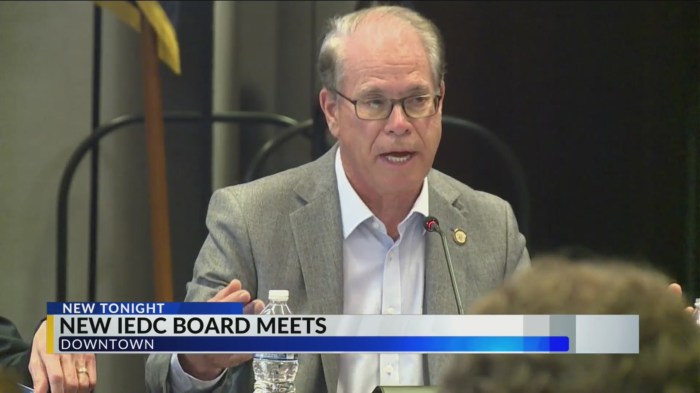
In conclusion, this first time guide to São Tomé e Príncipe offers a comprehensive overview of this captivating island nation. Whether you’re a seasoned traveler or a first-time explorer, this guide provides the insights you need to plan a truly memorable experience. From practical information to cultural insights, this resource equips you with the knowledge to navigate the diverse landscapes, cultures, and flavors of São Tomé e Príncipe.
Get ready to create your own unforgettable adventure!
